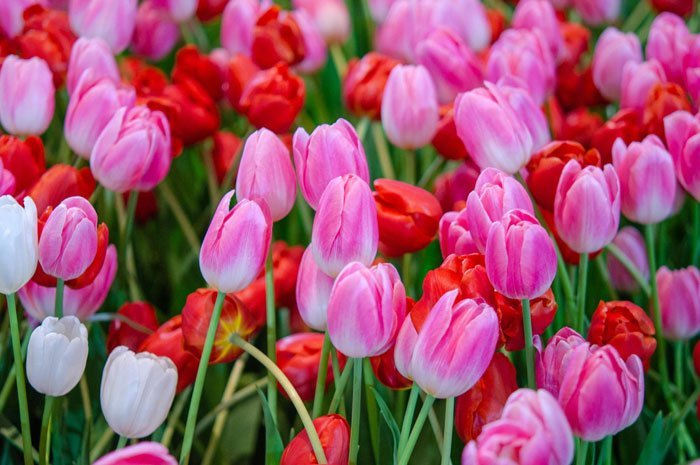In today’s money that represents some 2.6 million pounds. Not bad for a plant whose origin was that of a wild flower growing in Central Asia. Various histories of the tulip have been written, such has been the remarkable story of the humble or not so humble tulip. When the tulip arrived in the Netherlands a sort of madness took hold. There are various anecdotes such as the story of the fisherman who, mistaking a rare tulip for an onion ate it with his herring and was arrested and thrown into prison as a result. A prize variety of that time known as Semper Augustus even sold for the cost of the most expensive real estate in Amsterdam!

History tells us that as the tulip bulb market grew levels of speculation grew to absurd heights. Traders began to offer extraordinary amounts for bulbs yet to flower. I suppose the inevitable happened: the bubble burst and some were ruined financially. The numbers of people that were probably involved in the tulip trade might have been relatively small, and some of the stories surrounding the tulip in 17th Century Holland exaggerated, but certainly no other plant I can think of has been written about to such a sensational level.
I have to admit to being a great admirer of the tulip. The beauty of form, the elegance, the colour…. The shear delight of planting a bulb in Autumn and seeing it emerge in Spring when colour is often in short supply. The plant breeders have been busy when it comes to the tulip and the sheer range of available bulbs is staggering.
Bulbs such as tulips offer great advantages – they last from one year to the next, they are not too fussy about exact planting times nor watering regimes. Planting Spring flowering bulbs during their dormant stage is easy and results are usually predictable (though in gardening nothing can be assured!).
Tulips are to my mind flexible: tulips can be used in a variety of settings to suit every type of garden, and every gardener should find space because the results can be breathtaking. There are various divisions of the tulip that plant breeders have designed which is helpful in deciding the ever critical ‘right plant for the right place’.
Here are a few tulips of varying division type, colour and form:
‘Apricot Beauty’ Division early flowering single tulip around 15”/38cm height. Great in pots and looks good with ‘Coleur Cardinal’ which is red and plum. As with all tulips find the sunniest spot possible.
‘Black Hero’ Division double late (peony-flowered) around 26”/65cm height. Almost at the other end of the scale in terms of height, this one flowers late spring has petals resembling dark chocolate with a lovely sheen. The stems are sturdy. Great in borders and good for cut flowers.
‘White Triumphator’ Division Lily-flowered around 24”/60cm height. Pure white flowers, again lovely in borders and as a cut flower.
‘Flaming Parrot’ Division Parrot around 20”/50cm height. Magnificent fringed petals of pale yellow with flames of red. The blooms are large and heavy so place it in a sheltered position. Quite stunning!
The above is a snapshot of what is available, but I have tried and tested them over the years with good results. Now is the time to get planting, preferably before November is out.
Happy gardening!
Author: DAVID FLETCHER
David Fletcher MCIHort is a fully qualified member of the Chartered Institute of Horticulture, and has been a gardener most of his life, both as a professional and an amateur.






